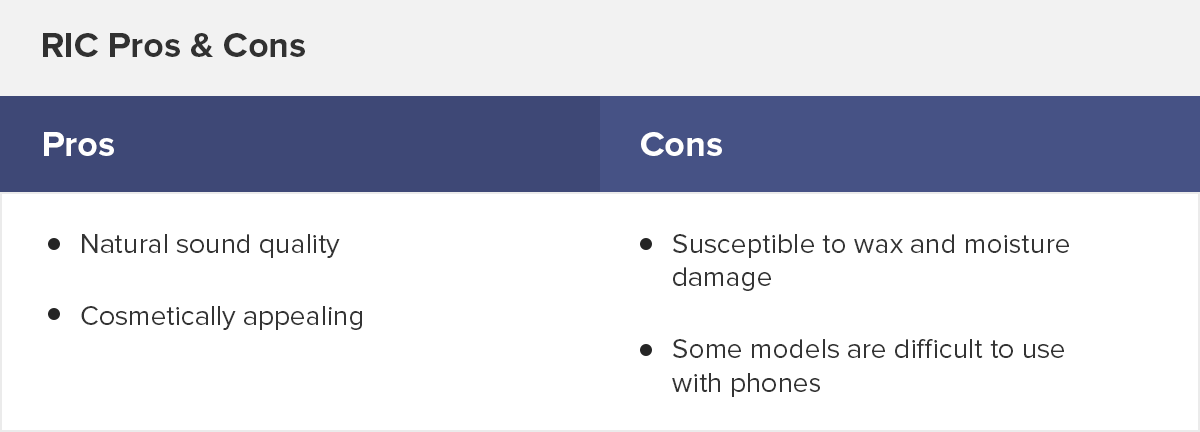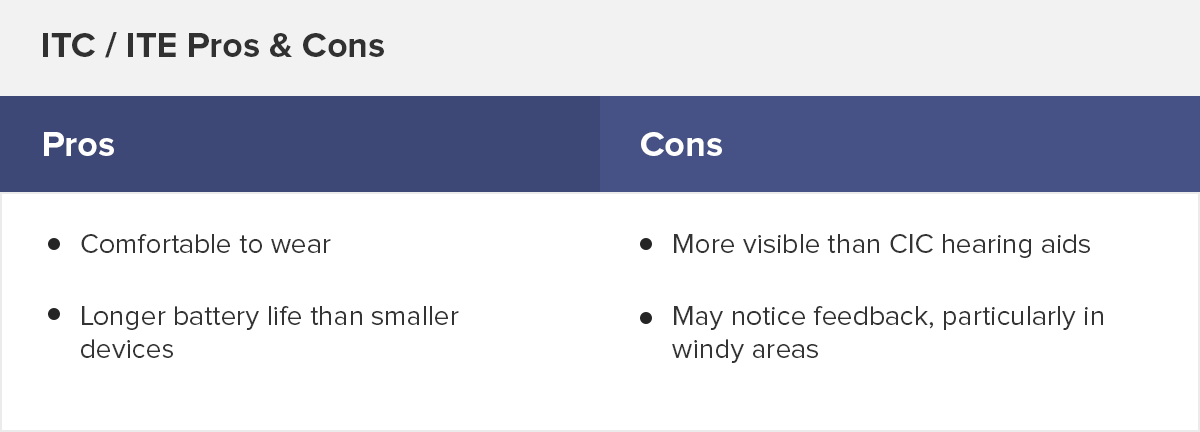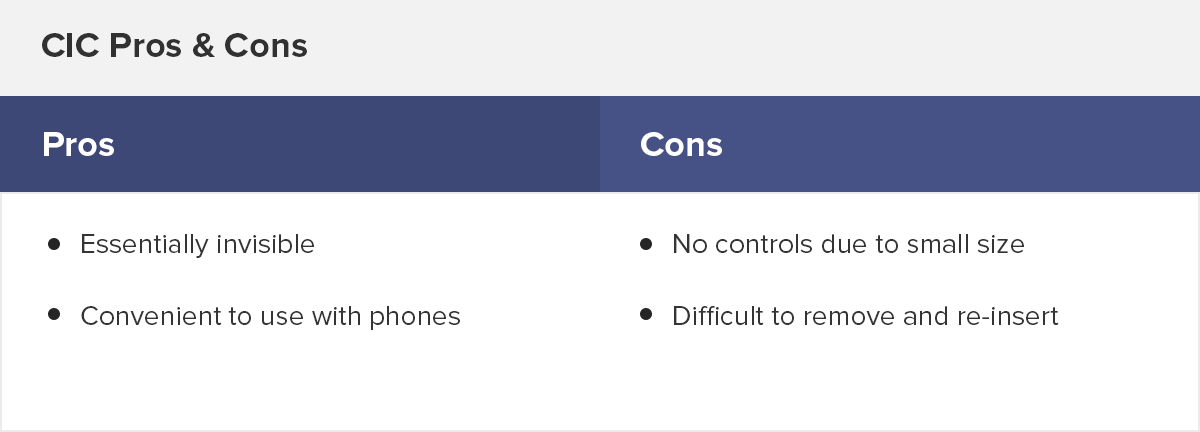6 Types of Hearing Aids in Australia

Contents
As technology improves, so do hearing aids. If it seems like there are more types of hearing aids available on the market than ever before, you’re right. It makes for a tough choice, so it helps to know your options.
In this guide we’ll go through the six main types of hearing aids, including who they’re suited to and the pros and cons of each.
- There are six main types of hearing aids that either sit behind the ear, in the ear, or in the ear canal.
- Behind the ear, or BTE, hearing aids are the most powerful but they are also the biggest.
- Completely in the ear canal, or CIC, hearing aids are the smallest but can be hardest to handle.
Types of Hearing Aids Available
There are six main types of hearing aids available, and they each have their pros and cons. Here are some of the things to consider when shopping for a hearing aid:
- Severity of your hearing loss
- Size of hearing aid and how easy it is to handle
- Ease of control
- Cost
- Cosmetic appearance
- Upkeep
- Sound quality

Behind the Ear
Suitable for: mild to severe hearing loss
This is the most common type of hearing aid, but also the most visible. In saying that, they are still relatively inconspicuous. The receiver and electronics are in a case, which sits behind the ear. Sound travels through a tube to an ear mould that sits in your ear.
The ear mould is made to fit your ear canal, for maximum comfort and efficiency. You can choose a case that matches your skin tone, which gives a more subtle appearance.
This is the most powerful style of hearing aid, and suits a wide range of hearing loss. Its larger size means larger button or dial controls, which can make it easier to handle if you have challenges with dexterity.
The battery tends to last longer on a BTE hearing aid, and the amplifier is stronger. Because the electrical parts of the hearing aid do not sit in the ear, they are protected from moisture and wax.

Mini Behind the Ear
Suitable for: mild to moderate hearing loss
A mini BTE is a smaller version of the standard Behind-The-Ear hearing aid. It’s a comfortable, visually appealing option for people who don’t like the feel of a larger BTE. Mini BTEs use a thin plastic tube to carry sound into the ear.
Unlike a regular BTE, the tube connects to a soft tip that sits in the ear without closing it off. This is called an ‘open fit’ and wearers may find that it feels more natural. Because there is no ear mould with a mini BTE, an ear cast is unnecessary.

Receiver in Canal
Suitable for: mild to severe hearing loss
A Receiver-In-Canal hearing aid, or RIC, uses a different distribution of technology than the BTE. Instead of housing all of the electronics in a case behind the ear, the receiver sits in the ear canal.
That means that the RIC’s microphone and amplifier still sit behind the ear, but the receiver itself is enclosed in an ear mould or ear tip. Instead of a tube transmitting the sound, a small wire connects the amplifier to the receiver.
An RIC type of hearing aid is discrete and provides a natural sound quality, but it can be difficult to use with some phones. However, recent technology has been developed to produce RIC hearing aids that can be used with Apple devices like an iPhone.
RIC wearers should be conscious that earwax and moisture can affect the speaker, which can result in reduced sound quality or damage. If required, an RIC ear tip can be replaced or repaired.

In the Ear – In the Canal
Suitable for: mild to moderately severe hearing loss
An in-the-canal (ITC) and in-the-ear (ITE) hearing aids sit in the ear bowl, so they are still more subtle than BTEs. They are smaller than BTE and RIC types of hearing aids, but not quite as small as CICs.
While the bulk of the hearing aid sits in the ear bowl, part of it goes into the ear canal to deliver sound. In general, ITE styles are more powerful than ITC styles, but they are also bigger.
These devices may occupy only the lower part of the ear bowl or its entirety. Either way, they will need to be custom fit to your ear.
People who have frequent ear infections may not be suited to these types of hearing aids. ITC and ITEs are also prone to damage from ear wax and moisture. They are smaller and therefore can be harder to handle, but many people find them easier to insert than BTEs.

Completely in the Ear Canal
Suitable for: mild to moderate hearing loss
A CIC hearing aid is ‘completely in the canal,’ making it the smallest type of hearing aid you can buy. These are essentially invisible, which is an attractive feature for many wearers.
Because they sit deep in your ear, they can be difficult to insert and remove, which can be an issue when it’s time to change the battery. There is also a potential for damage from wax and moisture.
CICs can be removed and inserted using a tiny handle or line attached to the device. This handle barely extends outside of the ear canal and is not easily visible.
CICs don’t have as many features as other hearing aids, due to their small size. Comfort depends somewhat on your ear canal; people with narrow or curved canals may not like the fel of a CIC.
Unlike other, bulkier hearing aids, CICs usually work well with modern technology like mobile phones, listening devices, and televisions. They are custom-made to suit your ear canal.

CROS
Suitable for: substantial hearing loss in one ear
CROS stands for Contralateral Routing of Signals. It’s a type of hearing aid for people who have hearing loss in one ear as opposed to both.
When you hear sounds with both ears (binaural hearing), the brain has an easier time judging a sound. It can tell where the sound is coming from and roughly how far away it is. But when you lose hearing in one ear, the brain struggles with perception.
A CROS hearing aid amplifies the sound that comes into the ear with hearing loss, transmitting it to a receiver on the other ear. This improves the brain’s ‘surround sound’ functions, so it can properly assess sound. A person wearing a CROS hearing aid should notice an improved ability to tell where a sound comes from, how far away it is, and what it is.
CROS hearing aids come in both behind-the-ear and in-the-ear formats. A hearing specialist can work with you to determine which format is best for your ear, hearing loss, and budget.

With so many options on the market, it can be tough to determine which type of hearing aid is right for you. Let the experts help! Start with a free hearing screen, then get some advice from a hearing professional. Most hearing aids allow for trial periods, so you can compare devices and find your favourite.